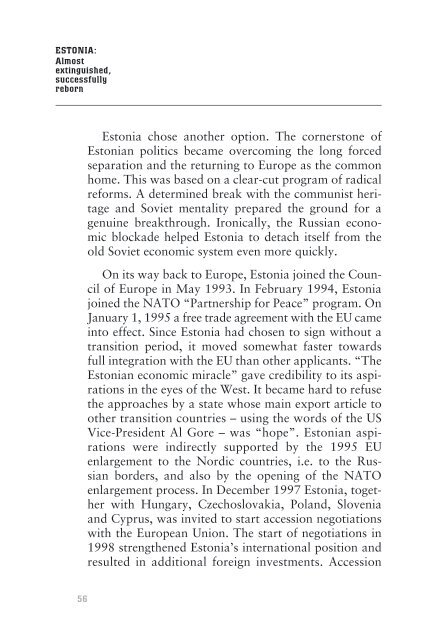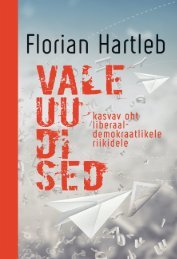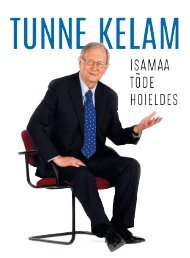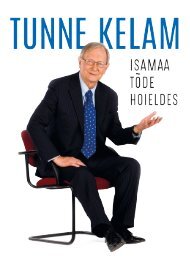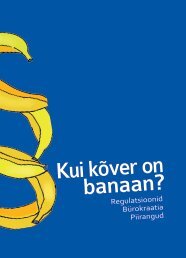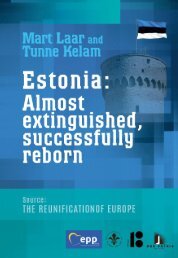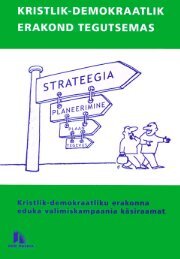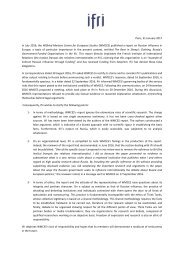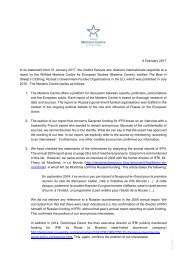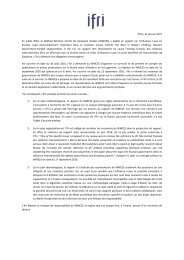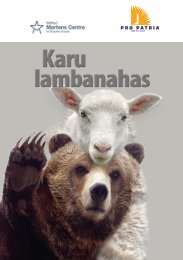ESTONIA: Almost extinguished, successfully reborn
The following text is the shortest possible review to help inform friends and guests from abroad about Estonia’s experience with foreign occupation and totalitarianism as well as its road to peacefully re-establishing national inde-pendence on the basis of democracy. Tunne Kelam Member of the European Parlament
The following text is the shortest possible review to help inform
friends and guests from abroad about Estonia’s experience with
foreign occupation and totalitarianism as well as its road to
peacefully re-establishing national inde-pendence on the basis
of democracy.
Tunne Kelam
Member of the European Parlament
Create successful ePaper yourself
Turn your PDF publications into a flip-book with our unique Google optimized e-Paper software.
<strong>ESTONIA</strong>:<br />
<strong>Almost</strong><br />
<strong>extinguished</strong>,<br />
<strong>successfully</strong><br />
<strong>reborn</strong><br />
Estonia chose another option. The cornerstone of<br />
Estonian politics became overcoming the long forced<br />
separation and the returning to Europe as the common<br />
home. This was based on a clear-cut program of radical<br />
reforms. A determined break with the communist heritage<br />
and Soviet mentality prepared the ground for a<br />
genuine breakthrough. Ironically, the Russian economic<br />
blockade helped Estonia to detach itself from the<br />
old Soviet economic system even more quickly.<br />
On its way back to Europe, Estonia joined the Council<br />
of Europe in May 1993. In February 1994, Estonia<br />
joined the NATO “Partnership for Peace” program. On<br />
January 1, 1995 a free trade agreement with the EU came<br />
into effect. Since Estonia had chosen to sign without a<br />
transition period, it moved somewhat faster towards<br />
full integration with the EU than other applicants. “The<br />
Estonian economic miracle” gave credibility to its aspirations<br />
in the eyes of the West. It became hard to refuse<br />
the approaches by a state whose main export article to<br />
other transition countries – using the words of the US<br />
Vice-President Al Gore – was “hope”. Estonian aspirations<br />
were indirectly supported by the 1995 EU<br />
enlargement to the Nordic countries, i.e. to the Russian<br />
borders, and also by the opening of the NATO<br />
enlargement process. In December 1997 Estonia, together<br />
with Hungary, Czechoslovakia, Poland, Slovenia<br />
and Cyprus, was invited to start accession negotiations<br />
with the European Union. The start of negotiations in<br />
1998 strengthened Estonia’s international position and<br />
resulted in additional foreign investments. Accession<br />
56


